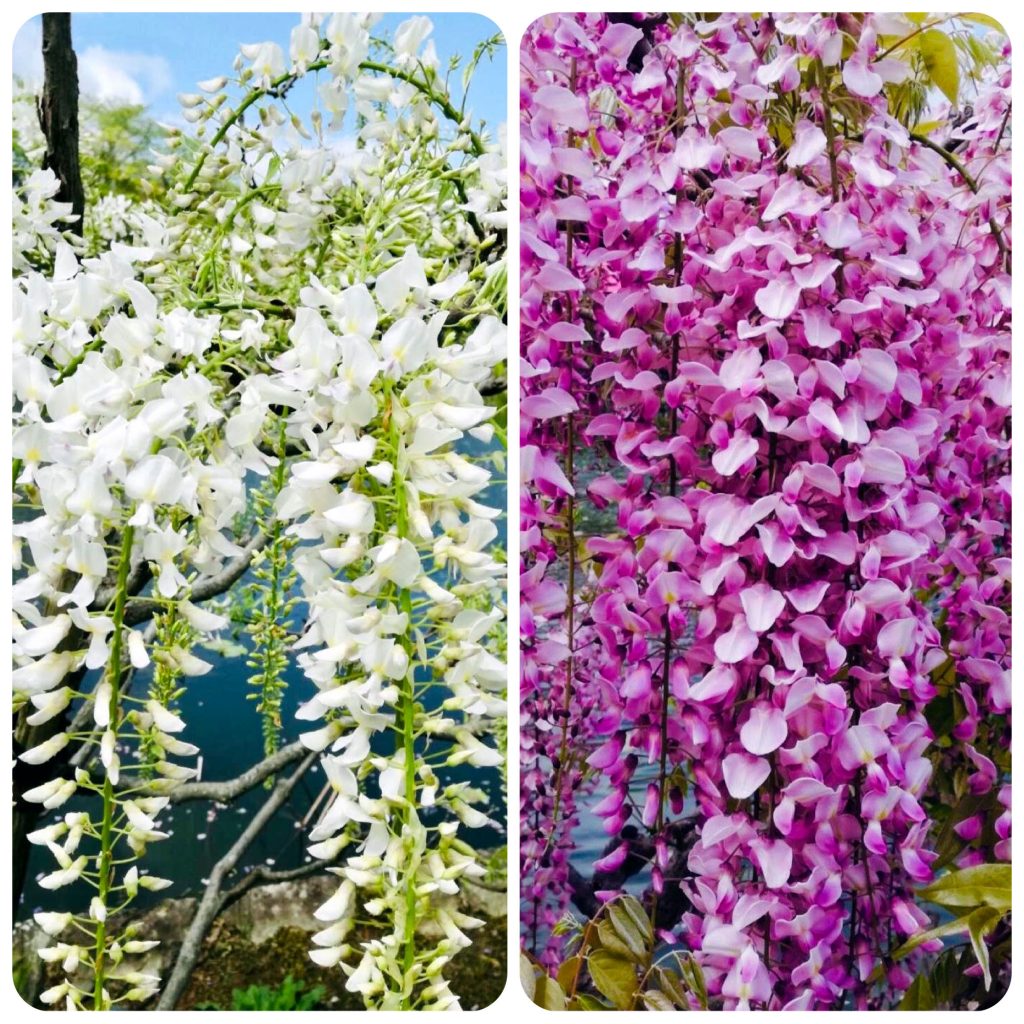
The fuji (wisteria) blossoms all at once, filling the air with a sweet fragrance. Fujii comes in two colors: purple and white. The elegant shade of pale bluish-purple is known as “fuji-iro” in Japanese, after the flower itself, and has long been a familiar traditional color in Japan, exuding a graceful and elegant atmosphere from the entire flower. On the other hand, compared to the graceful purple fuji, white fuji looks like a pure and innocent young girl. The flower language of white fuji is “nostalgic memories”, which evokes the image of one’s pure and innocent childhood. Fuji is native to Japan and there are two types: “nodafuji” and “yamafuji”. What is generally referred to as fuji is nodafuji, which is commonly seen for ornamental and cultivation purposes. On the other hand, yamafuji is a woody vine plant distributed in the western regions of Kinki, Shikoku, Kyushu and Chugoku, with its tendrils coiling in the opposite direction to fuji’s right coil. Its flower spikes are not as long as wisteria’s, and its flowers bloom later, with a more intense purple color than huji. The “fuji waterfall” commonly seen in the mountains is yamafuji.
フジが一斉に花開き、あたりに甘い香りを漂わせています。フジには紫と白の二色の花の色があります。淡い青みのある上品な紫色は、そのまま花の名をとって「藤色」と呼ばれています。古くからなじみ深い日本の伝統色としても浸透しており、花全体から放たれるたおやかで優美な雰囲気を醸し出しています。一方、白色のフジは、優美な紫の藤に比べて純粋無垢な少女の様です。白いフジの花言葉「懐かしい思い出」で、その純真無垢な幼い頃の姿を重ね合わせているようにも感じられます。フジは日本原産で、ノダフジとヤマフジの二種類があります。一般的にフジと呼んでいるのはノダフジで、観賞用・栽培用としてよく見かけます。一方、ヤマフジは近畿地方以西の中国・四国・九州に分布する木本性ツル植物で、ツルの巻き方向が、フジが右巻きなのに対して左巻きです。花穂がフジのように長く伸長しません。花期もフジよりも遅く、花は紫色がフジに比べて色濃いのが特徴です。山でよく見かけるフジ瀑布はヤマフジです。
